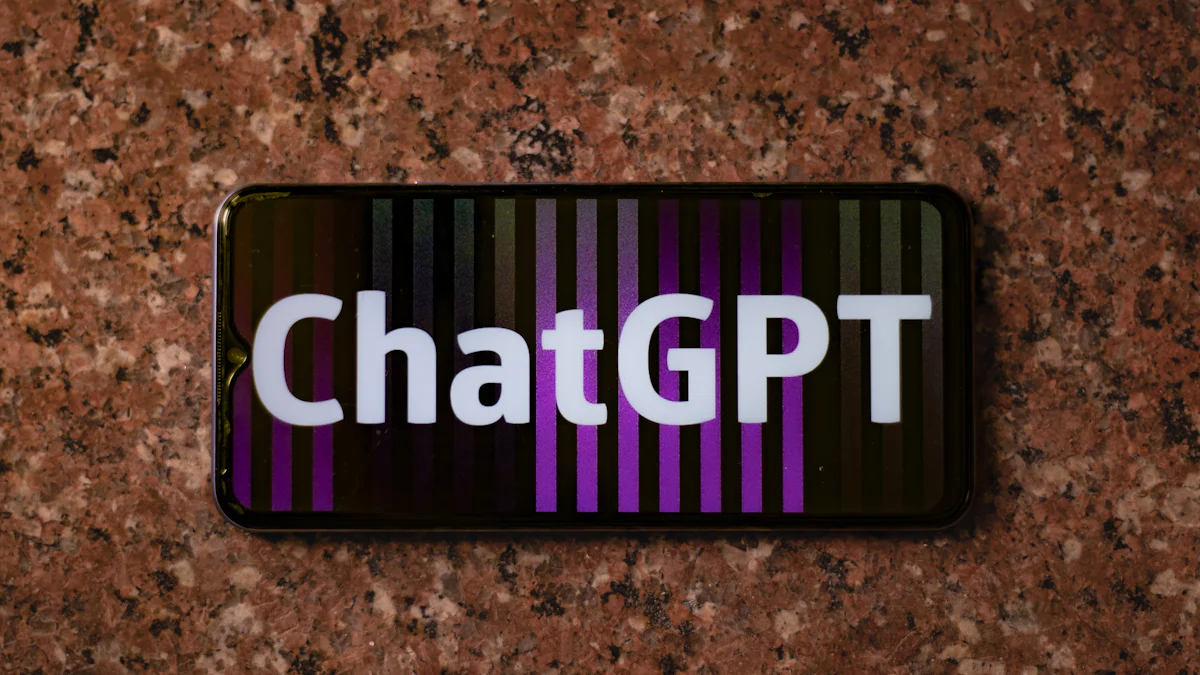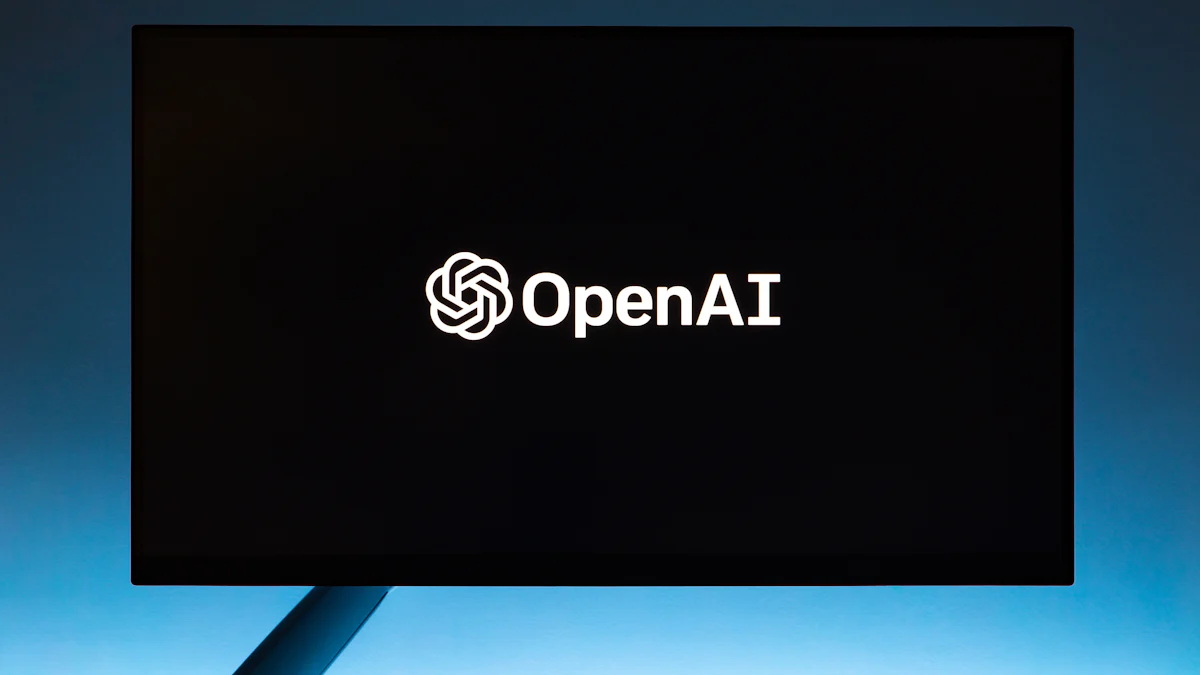How to create a chatbot for Airbnb using custom ChatGPT

Chatbots have revolutionized the hospitality industry. Hotels using chatbots report a 25% increase in customer loyalty and repeat bookings. ChatGPT, an advanced AI language model by OpenAI, offers powerful capabilities for creating intelligent chatbots. Customizing a chatbot for Airbnb can enhance guest experiences, streamline booking processes, and provide personalized interactions. Implementing a custom ChatGPT solution can transform Airbnb customer service live chat, leading to higher guest satisfaction and operational efficiency. By integrating a custom ChatGPT into Airbnb customer service chat, hosts can provide instant responses and seamless experiences, making the airbnb customer service live chat more effective and engaging.
Understanding the Basics
What is ChatGPT?
Overview of GPT-3 technology
ChatGPT, powered by GPT-3, represents a significant advancement in AI language models. GPT-3 stands for Generative Pre-trained Transformer 3. OpenAI developed this model to understand and generate human-like text. With 175 billion parameters, GPT-3 can process vast amounts of data, making it one of the most powerful language models available.
GPT-3's training involved diverse datasets, including books, articles, and websites. This extensive training enables the model to generate coherent and contextually relevant responses. The model's ability to understand context allows it to engage in meaningful conversations, making it ideal for creating a chatbot for Airbnb.
Key features and capabilities
GPT-3 offers several key features that make it suitable for developing a custom ChatGPT for Airbnb. These features include:
Natural Language Understanding: GPT-3 can comprehend complex queries and provide accurate responses.
Context Awareness: The model maintains context over multiple interactions, ensuring coherent conversations.
Versatility: GPT-3 can handle various tasks, from answering questions to providing recommendations.
Scalability: The model can manage high volumes of interactions, making it suitable for busy platforms like Airbnb.
These capabilities enable the creation of an effective chatbot for Airbnb customer service chat, enhancing guest experiences and operational efficiency.
Why Use a Chatbot for Airbnb?
Enhancing customer service
A chatbot for Airbnb can significantly enhance customer service. Guests often have questions about listings, amenities, or booking procedures. A custom ChatGPT can provide instant responses, reducing wait times and improving satisfaction. By integrating a chatbot into the Airbnb customer service live chat, hosts can ensure guests receive timely and accurate information.
Studies show that GPT-3's responses vary based on social groups, which highlights the importance of tailoring interactions to diverse audiences. This adaptability ensures that all guests feel valued and understood, leading to higher satisfaction rates.
Streamlining booking processes
Booking a stay on Airbnb involves several steps, from searching for properties to finalizing reservations. A chatbot can streamline these processes by guiding guests through each step. The chatbot can assist with property searches, availability checks, and booking confirmations. This automation reduces the workload for hosts and ensures a smooth booking experience for guests.
By leveraging a custom ChatGPT, hosts can automate repetitive tasks, allowing them to focus on more critical aspects of property management. This efficiency leads to better overall service and increased bookings.
Providing personalized recommendations
Personalization plays a crucial role in enhancing guest experiences. A chatbot for Airbnb can provide tailored recommendations based on guest preferences and past interactions. Whether guests seek local attractions, dining options, or unique experiences, the chatbot can offer valuable suggestions.
Using GPT-3's advanced capabilities, the chatbot can analyze guest data and preferences to deliver personalized recommendations. This level of customization enhances the guest experience and encourages repeat bookings.
Setting Up Your Development Environment
Required Tools and Software
Creating a custom chatbot for Airbnb using ChatGPT requires specific tools and software. These tools will help streamline the development process and ensure the chatbot functions efficiently.
Programming languages and frameworks
To develop a chatbot, you need proficiency in certain programming languages and frameworks. Here are the essential ones:
Python: Python is the most popular language for AI and machine learning projects. Its simplicity and extensive libraries make it ideal for developing chatbots.
JavaScript: JavaScript is crucial for web-based chatbots. It allows seamless integration with web applications.
Flask or Django: These Python frameworks help create robust web applications. Flask is lightweight and flexible, while Django offers more built-in features.
Node.js: Node.js is essential for server-side scripting. It helps manage backend operations and API requests.
APIs and libraries
APIs and libraries play a vital role in enhancing the chatbot's capabilities. Here are some key ones:
OpenAI API: The OpenAI API provides access to ChatGPT. This API enables the chatbot to generate human-like responses.
NLTK: The Natural Language Toolkit (NLTK) is a powerful library for natural language processing (NLP). It helps analyze and preprocess text data.
TensorFlow or PyTorch: These libraries are essential for machine learning tasks. They provide tools for training and deploying models.
Twilio: Twilio helps integrate messaging services. It allows the chatbot to send and receive messages through various platforms.
Installing and Configuring ChatGPT
Setting up ChatGPT involves several steps. Follow this guide to install and configure the chatbot effectively.
Step-by-step installation guide
Sign up for OpenAI API access: Visit the OpenAI website and sign up for API access. Obtain the API key needed for authentication.
Set up a development environment: Create a virtual environment using
virtualenvorconda. This isolates dependencies and prevents conflicts.Install necessary libraries: Use
pipto install required libraries. Run the following command:pip install openai flask nltk tensorflow twilioInitialize a Flask project: Create a new Flask project. Set up the basic structure with folders for templates, static files, and main application code.
Configure API keys: Store the OpenAI API key securely. Use environment variables to keep sensitive information safe.
Create routes and views: Define routes for handling user inputs and generating responses. Use Flask's routing system to manage different endpoints.
Integrate OpenAI API: Write functions to interact with the OpenAI API. Send user queries to ChatGPT and receive responses.
Configuration tips and best practices
Configuring ChatGPT correctly ensures optimal performance. Follow these tips for best results:
Optimize API calls: Minimize the number of API calls to reduce latency. Batch requests when possible.
Handle errors gracefully: Implement error handling for API requests. Provide fallback responses if the API fails.
Maintain context: Use session management to maintain conversation context. Store user interactions in a database or session variables.
Secure API keys: Never hard-code API keys in the source code. Use environment variables or secure vaults.
Monitor performance: Regularly monitor the chatbot's performance. Use logging and analytics tools to track usage and identify issues.
By following these steps and best practices, you can set up a robust development environment for creating a custom ChatGPT chatbot for Airbnb. This setup will enable you to build a powerful tool that enhances guest experiences and streamlines operations.
Designing Your Chatbot

Creating an effective chatbot for Airbnb involves careful planning and design. The goal is to ensure the chatbot meets guest needs and enhances their experience. Let's dive into how to define use cases and scenarios, and create conversational flows.
Defining Use Cases and Scenarios
Common interactions and queries
First, identify common interactions and queries guests might have. These could include questions about property availability, amenities, check-in procedures, or local attractions. By understanding these common queries, you can tailor the chatbot to provide accurate and helpful responses.
Availability Checks: Guests often ask if a property is available for specific dates.
Amenities Information: Queries about Wi-Fi, parking, or pet policies are frequent.
Booking Assistance: Guests may need help with booking processes or payment issues.
Local Recommendations: Providing suggestions for nearby restaurants or attractions enhances the guest experience.
User personas and journey mapping
Next, create user personas to represent different types of guests. This helps in understanding their needs and expectations. For example, a business traveler may prioritize fast Wi-Fi and proximity to conference centers, while a family might look for kid-friendly amenities and local parks.
Map out the guest journey from the initial inquiry to post-stay follow-up. Identify key touchpoints where the chatbot can assist. This ensures the chatbot provides value at every stage of the guest's interaction with Airbnb.
Creating Conversational Flows
Structuring dialogues
Designing conversational flows involves structuring dialogues to guide guests through their queries smoothly. Start with a friendly greeting and offer assistance. Use clear and concise language to keep interactions straightforward.
Greeting: "Hello! How can I assist you with your Airbnb booking today?"
Query Handling: "Sure, I can check the availability for you. What dates are you interested in?"
Follow-Up: "Would you like more information about the amenities available at this property?"
Ensure the chatbot maintains a natural flow by anticipating follow-up questions and providing relevant options. This keeps the conversation engaging and efficient.
Handling user inputs and responses
Handling user inputs effectively is crucial for a seamless experience. Implement natural language processing (NLP) to understand and interpret guest queries accurately. Use predefined responses for common questions and allow for flexibility in handling unique queries.
Predefined Responses: For frequently asked questions, prepare standard responses. This ensures consistency and accuracy.
Dynamic Responses: For more complex queries, use dynamic responses that adapt based on the context. For example, if a guest asks about nearby attractions, the chatbot can provide tailored recommendations based on the location of the property.
Incorporate error handling to manage situations where the chatbot cannot understand a query. Provide fallback options such as redirecting the guest to a human agent or offering alternative ways to get help.
By defining use cases and scenarios, and creating structured conversational flows, you can design a chatbot that enhances the Airbnb customer service chat. This leads to higher guest satisfaction and operational efficiency. A well-designed custom ChatGPT chatbot will transform the Airbnb customer service live chat, making it more effective and engaging.
Training and Testing Your Chatbot

Creating a successful chatbot for Airbnb involves rigorous training and testing. This process ensures the chatbot delivers accurate and helpful responses. Let's explore how to gather and prepare data, train the model, and test the chatbot effectively.
Data Collection and Preparation
Gathering relevant data
Start by collecting data relevant to the chatbot's purpose. Focus on gathering information about common guest queries, booking processes, and local recommendations. Use Airbnb's existing customer service chat logs as a valuable data source. Analyze these logs to identify frequent questions and typical guest interactions.
Consider using external data sources to enrich the dataset. Include information from travel guides, local business directories, and user reviews. This comprehensive data collection will provide a solid foundation for training the chatbot.
Cleaning and preprocessing data
Raw data often contains noise and inconsistencies. Clean and preprocess the data to improve the chatbot's performance. Remove irrelevant information, correct spelling errors, and standardize formats. Use natural language processing (NLP) techniques to tokenize text, remove stop words, and perform stemming or lemmatization.
Ensure the data represents diverse guest scenarios. Include various query types, different guest personas, and multiple interaction styles. This diversity will help the chatbot handle a wide range of guest inquiries effectively.
Training the Model
Training techniques and algorithms
Training the chatbot involves using advanced machine learning techniques. Leverage the power of GPT-3 technology to create a robust model. Use supervised learning to train the model with labeled data. Provide examples of guest queries and corresponding responses to guide the training process.
Experiment with different algorithms to optimize the model's performance. Consider using reinforcement learning to improve the chatbot's ability to handle complex interactions. This approach allows the model to learn from feedback and adjust its responses accordingly.
Evaluating model performance
Evaluate the model's performance to ensure it meets the desired standards. Use metrics such as accuracy, precision, recall, and F1-score to assess the quality of responses. Conduct cross-validation to validate the model's generalizability.
Compare the chatbot's performance against baseline models. Identify areas where the chatbot excels and where improvements are needed. Use this evaluation to refine the training process and enhance the model's capabilities.
Testing and Debugging
Identifying and fixing issues
Testing the chatbot is crucial to identify and fix issues before deployment. Conduct extensive testing using real-world scenarios. Simulate guest interactions to evaluate the chatbot's responses. Pay attention to edge cases and unusual queries that may challenge the model.
Use debugging tools to trace errors and understand their root causes. Implement logging mechanisms to capture detailed information about the chatbot's behavior. This data will help diagnose problems and guide the debugging process.
User testing and feedback
Involve real users in the testing phase to gather valuable feedback. Deploy the chatbot in a controlled environment and invite guests to interact with it. Collect feedback on the chatbot's performance, usability, and overall experience.
Analyze user feedback to identify strengths and weaknesses. Use this information to make iterative improvements to the chatbot. Continuously refine the model based on user insights to ensure it meets guest expectations.
By following these steps, you can train and test a powerful chatbot for Airbnb. This process will ensure the chatbot enhances the Airbnb customer service live chat, providing guests with instant and accurate responses. A well-trained custom ChatGPT chatbot will transform the Airbnb customer service chat, leading to higher guest satisfaction and operational efficiency.
Deploying and Maintaining Your Chatbot
Deployment Strategies
Hosting options
Choosing the right hosting option is crucial for deploying your custom ChatGPT chatbot. Several hosting solutions cater to different needs. Cloud-based platforms like AWS, Google Cloud, and Azure offer scalable and reliable services. These platforms provide robust infrastructure to handle high traffic volumes, ensuring your chatbot performs efficiently.
Self-hosting on dedicated servers offers more control over the environment. This option suits those who prefer managing their own infrastructure. However, self-hosting requires technical expertise and ongoing maintenance. Consider the trade-offs between control and convenience when selecting a hosting option.
Integration with Airbnb platform
Integrating your chatbot with the Airbnb customer service chat enhances guest interactions. Use Airbnb's API to connect your chatbot seamlessly with the platform. This integration allows the chatbot to access real-time data, such as property availability and booking details.
Follow these steps for integration:
Obtain API access from Airbnb.
Configure your chatbot to communicate with the Airbnb API.
Test the integration to ensure smooth data exchange.
Proper integration ensures your chatbot provides accurate and timely information, improving the Airbnb customer service live chat experience.
Monitoring and Updating
Performance monitoring tools
Monitoring your chatbot's performance is essential for maintaining high-quality service. Use performance monitoring tools to track key metrics such as response time, accuracy, and user satisfaction. Tools like New Relic, Datadog, and Grafana offer comprehensive monitoring solutions.
Set up alerts to notify you of any performance issues. Regularly review logs and analytics to identify areas for improvement. Monitoring helps ensure your chatbot Airbnb remains efficient and effective.
Regular updates and improvements
Regular updates keep your custom ChatGPT chatbot up-to-date and functioning optimally. Schedule periodic reviews to assess the chatbot's performance and identify potential enhancements. Implement updates to improve response accuracy, add new features, and address any bugs.
Gather user feedback to guide your updates. Encourage guests to share their experiences with the chatbot. Use this feedback to make informed decisions about improvements. Continuous updates ensure your chatbot evolves to meet changing guest needs.
Maintaining a well-deployed and updated chatbot guarantees a superior Airbnb customer service chat experience. By following these strategies, you can create a reliable and engaging tool that enhances guest satisfaction and streamlines operations.
Creating a custom chatbot for Airbnb involves several key steps. Start by understanding the basics of ChatGPT and its capabilities. Set up the development environment with the necessary tools and software. Design the chatbot with well-defined use cases and conversational flows. Train and test the model rigorously. Finally, deploy and maintain the chatbot effectively.
Chatbots offer immense benefits in the hospitality industry. They provide lightning-fast responses and personalized recommendations. These virtual assistants enhance guest experiences and streamline operations. The future potential of chatbots in hospitality looks promising.
Start building and experimenting with custom ChatGPT solutions today. Transform your Airbnb customer service and elevate guest satisfaction.
See Also
Creating a Personalized ChatGPT Chatbot for Business: Step-by-Step
Maximizing Website Engagement with ChatGPT Chatbot Integration
Training a Custom AI Chatbot with ChatGPT: Your Data Companion
Elevating Entertainment Chatbots with ChatGPT: A Premium Chat Experience
Crafting a ChatBot Using ChatGPT and Zapier: Step-by-Step Approach

